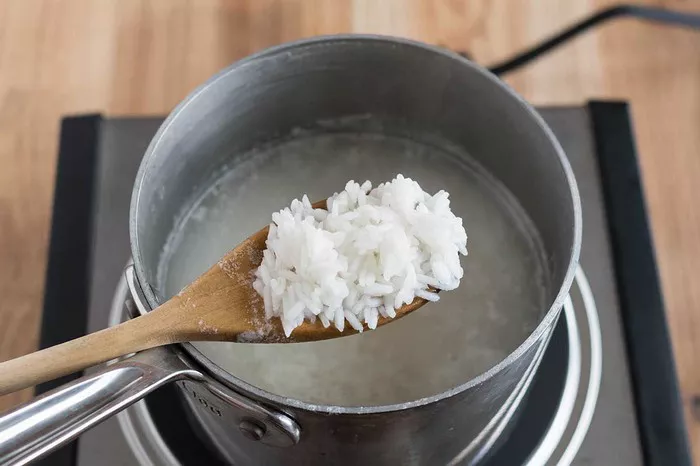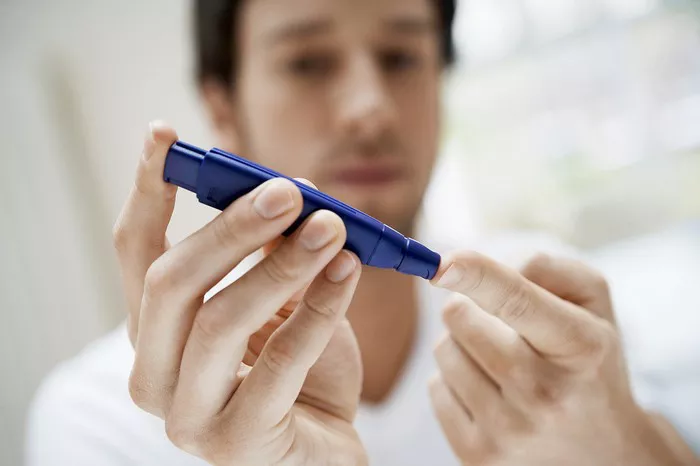Prediabetes is a condition in which blood sugar levels are higher than normal, but not yet high enough to be classified as type 2 diabetes. It serves as a warning sign, indicating that an individual is at increased risk for developing diabetes in the future. During this critical phase, making lifestyle changes, especially regarding diet, is paramount to reducing the risk of progression to full-blown diabetes.
A common dietary concern for those diagnosed with prediabetes is whether or not certain foods, such as rice, are safe to consume. Rice is a staple food in many cultures around the world, and it provides essential carbohydrates, but it also has an impact on blood glucose levels. For individuals managing prediabetes, understanding how rice affects blood sugar levels and what types of rice might be healthier choices is essential.
In this article, we will explore the relationship between rice consumption and prediabetes. We’ll discuss the different types of rice, their impact on blood sugar, and the best strategies to include rice in a prediabetic diet without negatively affecting glucose control. By focusing on moderation, portion control, and healthy eating habits, individuals with prediabetes can enjoy rice while maintaining their blood sugar levels within a healthy range.
Understanding Prediabetes and Its Impact on Diet
Prediabetes is characterized by insulin resistance, where the body’s cells are less responsive to insulin, resulting in higher-than-normal blood sugar levels. Over time, this can lead to type 2 diabetes if not properly managed. The key to reversing or managing prediabetes lies in lifestyle changes, with diet playing a crucial role in controlling blood sugar levels.
Carbohydrates, including sugars and starches, have the most significant effect on blood sugar. When you consume carbohydrates, your body breaks them down into glucose, which enters the bloodstream. The pancreas then releases insulin to help cells absorb this glucose. For people with prediabetes, this process does not work as efficiently, which can result in elevated blood sugar levels after meals. Therefore, it is important to monitor carbohydrate intake, especially from high-glycemic foods, which can cause rapid spikes in blood sugar.
Rice and Its Glycemic Index
Rice is primarily composed of carbohydrates, which makes it a significant contributor to blood sugar levels. However, not all rice is the same when it comes to its effect on glucose. The glycemic index (GI) is a measure of how quickly a food increases blood sugar levels after consumption. Foods with a high GI cause rapid spikes in blood glucose, while those with a low GI result in a slower, more controlled increase in blood sugar.
White rice is known for having a high GI, meaning it can cause quick increases in blood sugar levels. This is because it is highly processed and stripped of its fiber and nutrients during milling. Brown rice, on the other hand, has a lower GI due to its higher fiber content, which slows down the absorption of glucose into the bloodstream. Other types of rice, such as wild rice or black rice, also have lower GIs and offer additional health benefits.
The GI of rice can be influenced by various factors, including its preparation method and the portion size. For example, overcooking rice can lead to a higher GI, while cooling rice after cooking can reduce its GI due to the formation of resistant starch. It’s important for individuals with prediabetes to understand these nuances to make informed choices about rice consumption.
The Impact of Rice on Blood Sugar in Prediabetes
While rice is a source of carbohydrates, it is the quality and quantity of carbohydrates that determines its effect on blood sugar levels. When consumed in large portions or when paired with other high-GI foods, rice can lead to significant blood sugar spikes, which is a concern for individuals with prediabetes. However, when consumed in moderation and in the right context, rice can be part of a healthy diet for those managing prediabetes.
Blood Sugar Spikes from White Rice
White rice, with its high GI, can cause a rapid increase in blood glucose levels, leading to what is known as a “sugar spike.” After eating white rice, blood sugar levels may rise quickly, triggering the pancreas to release insulin. For people with prediabetes, this process is impaired, which can result in persistently elevated blood sugar levels after meals. Over time, frequent consumption of high-GI foods like white rice can worsen insulin resistance and increase the risk of developing type 2 diabetes.
Lower Blood Sugar Spikes with Brown and Other Whole-Grain Rice
Brown rice, along with other whole-grain varieties such as wild rice, has a lower GI due to its intact bran and germ. The fiber in these types of rice helps slow down the breakdown of carbohydrates into glucose, leading to a more gradual and controlled rise in blood sugar. This is particularly beneficial for individuals with prediabetes, as it can help maintain stable blood glucose levels throughout the day. In addition to the lower GI, brown rice provides important nutrients such as magnesium, which plays a role in insulin sensitivity and blood sugar control.
Portion Control Is Key
Even though brown rice has a lower GI than white rice, portion control is still essential. Consuming large portions of any rice, regardless of its GI, can lead to excess carbohydrate intake and increased blood sugar levels. For those with prediabetes, it is recommended to limit rice portions to around half a cup to one cup per meal, depending on individual carbohydrate goals and needs. Pairing rice with other nutrient-dense foods, such as non-starchy vegetables and lean proteins, can further help regulate blood sugar levels.
Can Rice Be Part of a Healthy Prediabetic Diet?
The question of whether rice can be included in a healthy diet for someone with prediabetes does not have a simple yes or no answer. The key to incorporating rice into a prediabetic diet is to focus on moderation, choose lower-GI varieties, and pair rice with other foods that help stabilize blood sugar.
Choosing the Right Type of Rice
For individuals with prediabetes, choosing rice varieties with a lower glycemic index is crucial. Brown rice, wild rice, black rice, and other whole-grain rice options are healthier choices compared to white rice. These types of rice not only have a lower GI but also provide essential nutrients such as fiber, antioxidants, and vitamins. The fiber content in whole-grain rice helps slow the digestion and absorption of carbohydrates, reducing the risk of blood sugar spikes.
Pairing Rice with Low-GI Foods
One of the best strategies for managing blood sugar levels is to pair rice with low-GI foods that help balance out the overall meal. Non-starchy vegetables such as leafy greens, peppers, and cucumbers have little impact on blood sugar levels and can add volume, nutrients, and fiber to the meal. Lean proteins, such as chicken, fish, or legumes, also help slow the absorption of glucose and improve satiety, preventing overeating and promoting stable blood sugar levels.
Consider the Cooking Method
The way rice is prepared can also influence its glycemic index. For example, cooking rice al dente (firm) rather than overcooking it can help maintain a lower GI. Additionally, cooling rice after cooking and reheating it can increase its resistant starch content, which is a type of fiber that the body cannot digest and which helps reduce the glycemic impact of the rice. This simple strategy can make rice a more suitable option for those managing prediabetes.
Moderation Is Essential
Portion control remains a fundamental principle when including rice in a prediabetic diet. While it is possible to enjoy rice in moderation, excessive consumption can still lead to an overconsumption of carbohydrates, which can raise blood sugar levels. Individuals with prediabetes should aim to consume small portions of rice (around half a cup per meal) and balance their meals with other low-GI, fiber-rich foods.
Alternative Options to Rice
If you’re looking for alternative options to rice that are even lower in carbohydrates and have less impact on blood sugar levels, there are several healthy substitutes to consider:
Cauliflower Rice: Cauliflower rice is made by grating cauliflower into small, rice-like pieces. It’s a low-carb, high-fiber alternative to rice that is perfect for those with prediabetes. It’s also rich in antioxidants and vitamins, making it an excellent addition to any meal.
Quinoa: Quinoa is a whole grain that contains protein, fiber, and essential vitamins and minerals. It has a lower glycemic index than rice and can be used as a substitute in many dishes.
Shirataki Rice: Made from konjac root, shirataki rice is a low-calorie, low-carb alternative to traditional rice. It’s high in fiber and very low in carbohydrates, making it a great choice for those looking to manage blood sugar levels.
Conclusion: Moderation and Balance Are Key
In summary, rice can be part of a healthy diet for individuals with prediabetes, but it requires careful consideration of the type of rice, portion sizes, and how it is incorporated into the overall meal. While white rice should generally be avoided due to its high glycemic index, whole-grain varieties like brown rice, wild rice, and black rice can be included in moderation, provided they are balanced with other low-GI foods and lean proteins.
The most important factor for managing prediabetes is maintaining a balanced and varied diet, focusing on nutrient-dense foods that promote stable blood sugar levels. By making informed choices about rice consumption and prioritizing overall meal quality, individuals with prediabetes can manage their condition effectively and reduce the risk of developing type 2 diabetes.
Related topics:
How Curing Diabetes Naturally at Home


























